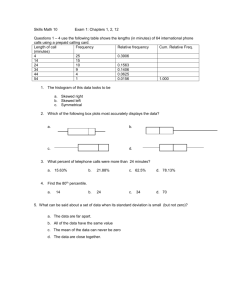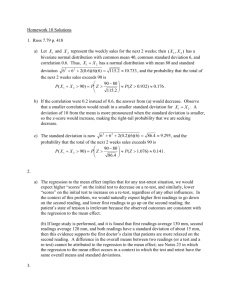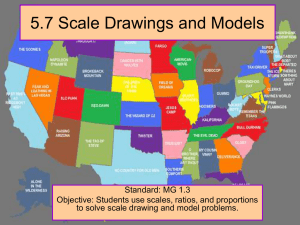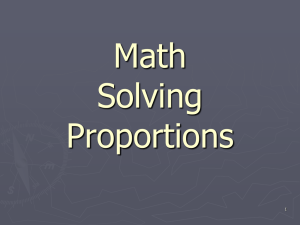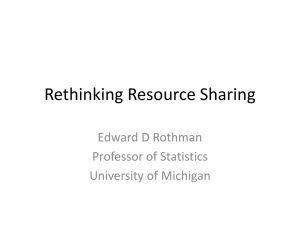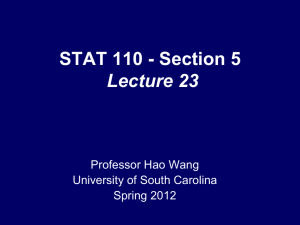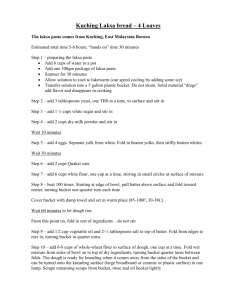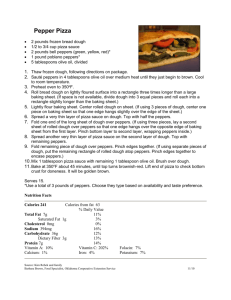PowerPoint 6.2, 6.3
advertisement
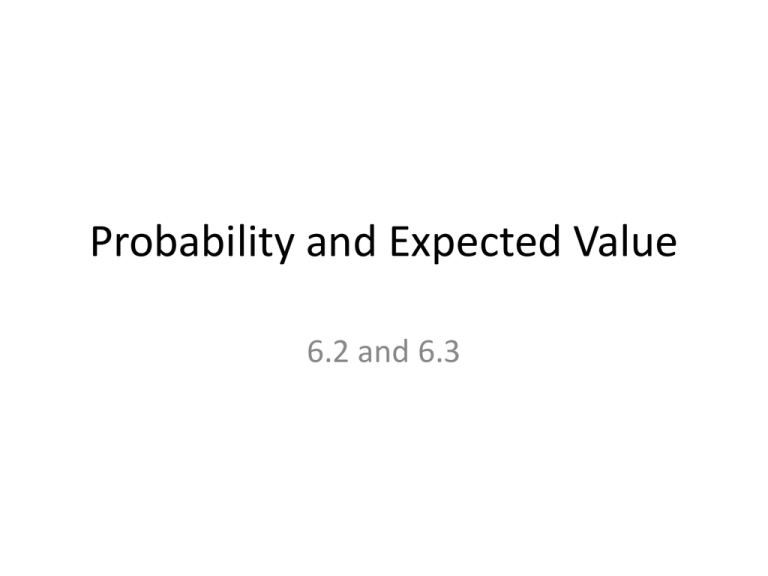
Probability and Expected Value 6.2 and 6.3 Expressing Probability • The probability of an event is always between 0 and 1, inclusive. • A fair coin is tossed once, what is the P(heads)? • What does a probability of 0 mean? • What does a probability of 1 mean? Theoretical Method for Equally Likely Outcomes •A card is drawn from a standard shuffled deck. What is the probability that the card is a king? •What is the probability that the card is a heart? •A couple is expecting their fourth child. The first 3 children are girls. What is the probability that the fourth child is a boy? Example • In a recent year, 389 of the 281, 421,906 people in the United States were struck by lightning. Estimate the probability that a randomly selected person in the United States will be struck by lightning this year. • In a study of brand recognition, 831 consumers knew of Campbell’s Soup and 18 did not. Estimate the probability that a randomly selected consumer will recognize Campbell’s Soup. Complements • The complement of an event consists of all outcomes in which the event does not occur. • What is the complement of the event “a rainy day”? • What is the complement of the event “at least one girl” in a four child family. • P(not A) = 1-P(A) • If there is a 30% chance of rain today, what is the probability of no rain? • What is the probability of at least one girl in a four child family? Probability Distribution • A probability distribution represents the probabilities of all possible events. 1. List all possible outcomes. 2. Group outcomes into the events you are concerned with. 3. Find the probability of each event. 4. List in a table. Be sure the sum of the probabilities is 1. Example • Find a probability distribution for the number of girls in a 3 child family? The Law of Large Numbers • Applies to independent events—repeated trials to do not depend on earlier trials. • If the process is repeated many times, the proportion of trials in which event A occurs will be close to the P(A). The larger the number of trials, the closer the proportion should be to P(A) Experiment tossing a Coin Toss a coin the indicated number of times and record the proportion of heads. # of tosses Proportion of heads # of tosses 1 30 5 40 10 50 20 60 Proportion of heads What happens to the proportion of heads as the number of tosses increases? Expected Value • The expected value of a variable is the weighted average of all its possible events. • Only find the expected value when there are a large number of events. Thought Question 1 Suppose that a sorority is selling raffle tickets to raise money. The grand prize is a 32gb iPod Touch valued at $280, and the members must sell all 1000 raffle tickets that were printed. How much would you be willing to pay for a single ticket? Explain your answer. How much should the sorority charge if they want people to buy the tickets, but still make a profit? IPod Touch Expected Value • Suppose the sorority thinks they can sell all 1000 tickets for $1 each. Remember the value of the IPod touch is $280. Find your expected value if you choose to buy a ticket? Deal or No Deal? (1) You choose one of four sealed cases; one contains $1,000, and the others are empty. If you open your case, you have a 25% chance to win $1,000 and a 75% chance of getting nothing (winning $0). (2) Or, you can sell your unopened case for $240, giving you a 100% chance of winning $240. (3) Find the expected value of each situation? (4) Will you open or sell your case? Life Insurance The CNA Insurance Company charges a 21-year-old male a premium of $250/year for a$100,000 life insurance policy. A 21-year-old male has a 0.9985 probability of living for a year (based on data from the National Center for Health Statistics. • From the perspective of a 21-year-old male (or his estate), what are the values of the two different outcomes? • What is the expected value for a 21-year-old male who buys the insurance? • What would be the cost of the insurance policy if the company just breaks even (in the long run with many such policies), instead of making a profit? • Should a 21-year-old make buy a $100,000 life insurance policy? Gambler’s Fallacy • The gambler’s fallacy is the mistaken belief that a streak of bad luck makes a person “due” for a streak of good luck. The Law of Large Numbers Gambling The “house” in a gambling operation is not gambling at all – The games are defined so that the gambler has a negative expected gain per play. – Each play is independent of previous plays, so the law of large numbers guarantees that the average winnings of a large number of customers will be close to the (negative) expected value. 1 6 If You Can Play Tic-Tac-Toe, You Can Win Lucky Dough! • You can win cash with the Lottery’s newest Numbers game, Lucky Dough. This new game, along with Club Keno, is sold only in Lottery locations with social environments and a liquor-by-the-drink license. This fun new game offers: • A growing top prize that starts at $10,000 and grows until someone wins it! • Average winning jackpots of $50,000 with the potential to grow to more than $200,000. • Seven different prize levels! • A drawing every 5 minutes! • Great chances to win at 1 in 6.01! • A play action that is as easy as tic-tac-toe! Use the information on the website to compute the expected value. http://www.molottery.com/lucky_dough/lucky_dough.shtm Probability Distribution for Lucky Dough Winnings $10,000 $200 $100 $50 $15 $5 $2 ? Probability 1/390625=0.00000256 1/24414=0.00004096 1/8138=0.0001229 1/2035=0.0004914 1/313=0.003195 1/59=0.01695 1/7=0.14286 ?

